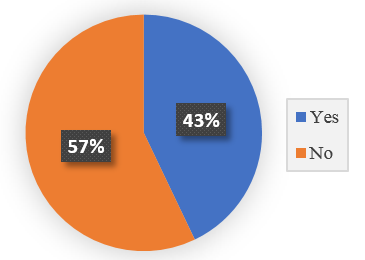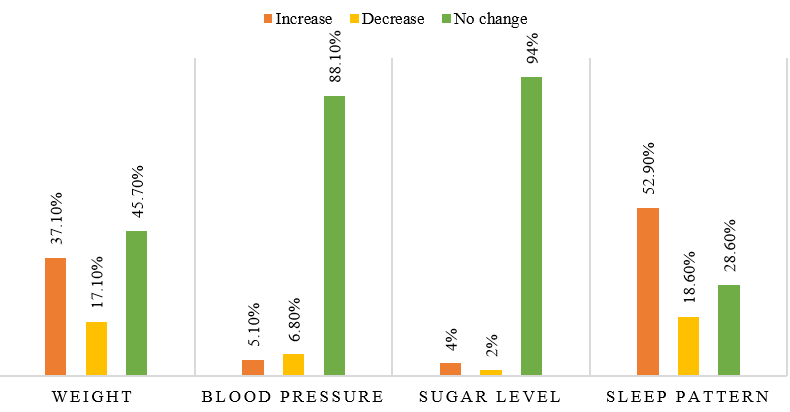Introduction
A novel, never heard before virus causing respiratory disease was found in Wuhan, China on December 2019. This virus was termed as the SARS-CoV-2 virus and the disease it caused was coined as COVID-19.1 The people infected with the virus presented various symptoms such as shortness of breath, fever and cough. Some of the rarer symptoms were gastrointestinal disorders such as abdominal pain, diarrhoea and vomiting. A large number group of people were found to be asymptomatic carriers.2 The effects of the virus on children were found to be generally mild and most cases were found to be asymptomatic. However, it was observed that lactate dehydrogenase and C-reactive protein was increased in some cases which were severe. 3
SARS-CoV-2, which is like other conditions such as MERS and SARS, is mostly transmitted via the respiratory tract with a high rate of infectivity. Droplet transmission is found to be the main route. Another route is through aerosols, but more scientific evidence is needed. The virus was also found to be present on the surfaces or objects used every day such as cell phones and door handles. 4
The infection caused by the virus results in many long-lasting complications on organ systems in the body leading to multiorgan dysfunction, critical illness and systemic inflammation. The cardiovascular system is influenced by the virus leading to conditions such as heart failure, myocarditis, acute myocardial infarction and venous thromboembolic conditions.5 Hospitalized patients reported blood hypercoagulability in many cases. Conditions needing continuous monitoring and immediate intervention such as PT and aPTT prolongation, severe thrombocytopenia were found to be present in severe cases of infected patients.6 Another system which was impacted was the neurologic system, leading to complications such as encephalitis, acute necrotizing haemorrhagic encephalopathy and Guillain-Barre syndrome.7
Due to the high rate of infectivity and mortality, governments all around the world went into lockdowns, strict restrictions and compulsory quarantine.8 On March 24, a nationwide lockdown was announced by the Prime Minister of India in the evening. This was done as a precautionary measure to control the spread of the Covid-19 virus.9 Due to the sudden implementation of the lockdown, already disadvantaged vulnerable population were much affected. Migrant workers and daily wage labourers were part of a large exodus as they travelled back to their home states. Enforcement of public and community health measures became a difficult challenge for the government due to pre-existing problems of overcrowding and sanitation in many areas.10 However, different kinds of protocols and strategies were also evolved during last two years of COVID-19 pandemic for treatment of remote areas.11, 12
Studies using predictive models showed that patients suffering from Diabetes were more at risk due to their deteriorating glycaemic control,13 increase in consumption of snacks and high calorie junk food combined with very less physical activity could have also been a cause for obesity during lockdown. Obesity along with Diabetes is the starting cause for many cardiovascular diseases in the future.14 Various treatment modalities were developed for treatment and prophylaxis of COVID-1915, 16, 17 and a white paper on ivermectin was also published to review its role in the management of COVID-19 in developing countries. 18, 19, 20, 21
On the other extreme, the people in the lower strata of society such as the migrant labourers and the vulnerable population such as children and pregnant women,22 have borne the brunt of the lock down as many of the daily wage-earning labourers have been unable to purchase food for their everyday need. Another aspect of health is mental health which was seen to be declining due to increase in various negative situations such as depression, domestic violence,23 stress and alcohol abuse. There was also a great impact on health care workers in the fight against COVID-19 in our country and more than 1500 doctors of modern medicine system and numerous health care workers sacrificed their lives during discharging their duty for the care of COVID-19 patients24 and a lot developed psychological stress during this pandemic.25
The general sleep pattern of many people was studied, showing that people tended to sleep at later times and wake up late. There was also an increase in the time people slept during the day. This affected the quality of night time sleep. 26
Therefore, this study assessed the impact and effect of the nationwide lockdown on the health status and lifestyle habits of the general population.
The present study was done to assess the impact and effect of the nationwide lockdown on the health status and lifestyle habits of the general population.
Materials and Methods
The general health and nutritional status of 70 participants based in Lucknow was assessed over a period of two weeks during the second phase of the lockdown. The participants were asked to complete an online survey which contained questions on physical health, mental health and nutritional status. Data was collected and analysed using Microsoft Excel software.
Results and Discussion
The study focused mostly on the physical, mental and nutritional status of the participants in an effort to study the effects of the lockdown on the general health of the population.
A total of 70 participants were analysed in which both genders were divided equally. There were 35 males and 35 females. 54.3% states that they had more than 4 members in their family. 60% were unemployed and 40% were working. Among the working population, 51.6% were working from home. According to the report by International Labour Organization, young people were already susceptible before the pandemic and the following lockdown. Now, it has created distressing impacts on youth due to many layoffs and job losses. 27
42.9% experienced distress during the lockdown period as shown in Figure 1. Distress could have been caused due to anxiety and worry about the future coupled with poor mental health.
Health status
As shown in Figure 2, 37.1% informed of weight gain during the lockdown, while 17.1% reported weight loss and 45.7% said there was no change in their weight. 20% of the participants reported that they suffered from prior hypertension. Out of them, 6.8% stated that there was a decrease in their blood pressure levels, 5.1% said there was an increase and 88.1% informed that there was no change in their blood pressure levels. Patients who suffered from diabetes were 5.7%, out of which only 4% reported of elevated sugar levels. 52.9% reported an increase in their sleeping hours during lockdown compared to before the pandemic. 18.6% stated a decrease in their sleeping hours and 28.6% said that there was no change in their sleeping pattern.
Diet
71.4% reported that they consumed a mixed diet, that is, both vegetarian and non - vegetarian foods. The data showed that before the lockdown, 87% consumed 3 meals a day, while 11.6% consumed 4 meals a day. However, during lockdown, it was seen that 60.9% consumed 3 meals a day, 29% consumed 4 meals a day and 10.1% consumed 5 meals a day. On comparing the data, it can be found that the percentage of people consuming 3 meals a day decreased 26.1%, the percentage of people consuming 4 meals has increased 17.4% and the percentage of people consuming 5 meals a day increased by 10.1%. It can be observed that due to the shift in increased number of meals, weight gain and obesity can be caused. It was also noticed that 33.3% reported an increase in the habit of munching snacks between meals. Many studies reported an increase in snacking, number of meals consumed and their frequency during lockdown. 28
Lifestyle habits and mental health
7.1% of people said that their smoking habit increased during lockdown and among people who consumed alcohol, 19.2% reported an increase in drinking frequency. 42.6% reported spending 1 hour in recreational and physical activity, 33.8% spent 2 hours and only 19.1% spent more than 3 hours. 27.9% said they undertook cooking as a recreational activity, 30.9% said they took up music and 7.4% said that they took up gardening. A study conducted in Italy stated that out of 3533 respondents, 48.6% reported weight gain, 3.3% stopped smoking and there was a slight increase in physical activity. 29
31.4% reported feeling low and depressed during the lockdown, while 40.6% reported feeling stressed more often during this period. 32.4% complained of increased pains and general body discomfort during the period of study. 44.9% complained of loneliness while in Lockdown. 55.9% reported that they suffered from mood swings and 39.1% said that they experienced conflict among family members. Young people showed an increased rates of suicidal thoughts over the time of the pandemic and those who already suffer from mental health issues had worse outcomes across most factors. 30
Conclusions
Due to the COVID-19 pandemic, the government struggled to control the virus from spreading leading to lockdown in phases. As, this was an unexpected decision for many, the general population was caught unaware and struggled to get adjusted to a new way of living with many cautionary rules and regulations. The lower income classes of people such as daily labourers were the ones who were most impacted as they depend on their everyday work for their wages. People who used to go to work shifted from travelling to offices to working from home. This led to many distinct lifestyle changes. Because of the lockdown, there was no outdoor recreational activities leading to a lot of sedentary activities such as watching television, playing games on mobile phones and so on. This can become a risk factor for the development of many Non communicable diseases such as Diabetes, Hypertension and cardiovascular diseases.
This survey was conducted during the lockdown to see its impact on people and some alarming changes can be seen in the lifestyle patterns of the general public. This can lead to a shift in living trends which people will adhere to even after the pandemic and lockdown is completed. More awareness should be spread to teach people to manage living with these new conditions without causing much harm to their future health.


